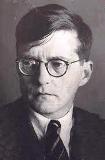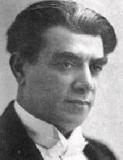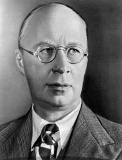
CSO Chamber Players Add Dash of Vodka to Constella Festival

Dmitri Shostakovich
|
The Cincinnati Symphony Orchestra’s Russian Festival met the Constella Festival Friday night in Mayerson Theater at the Erich Kunzel Center for Arts and Education.
Getting an early start on the CSO’s Russian Festival (Nov. 11, 13, 17 and 19) were the CSO Chamber Players in a program of Glière, Shostakovich and Prokofiev. The concert was presented in collaboration with the new Constella Festival of Music and Fine Arts, underway through Nov. 8.
Chamber music lovers were out in force to enjoy the music and the comfortable new venue, which the Chamber Players have adopted as their home, replacing Memorial Hall.
Performing were violinists Timothy Lees, Rebecca Culnan, Eric Bates and Catherine Lange-Jensen, violists Denisse Rodriguez-Rivera and Joanne Wojtowitz, cellists Dan Culnan and Susan Marshall-Petersen, double bassist Boris Astafiev, oboist Dwight Parry and clarinetist Jonathan Gunn, all members of the CSO.

Reinhold Glière
|
Bates and Marshall-Petersen opened with Reinhold Glière’s Duos for Violin and Cello, Op. 39 (1909), a delightful set, comprising eight short pieces for violin and cello. Each is distinct from the rest, with a dark, serious Prelude, a Bachian Gavotte, a sweet Lullaby, a dance-like Intermezzo and a skittering Etude, among others. The two musicians performed with brightness and clarity, giving each piece a character befitting its content.
Second on the program – and completely opposite to Glière as viewed through the lens of Russian history – was Shostakovich’s String Quartet No. 8 in C Minor, Op. 110, performed by Rebecca and Dan Culnan, Lange-Jensen and Rodriguez-Rivera. No more despairing work has ever been written. It was composed in 1960, as the composer faced polio and the always imminent threat of Soviet disapproval (by contrast, Glière was always in favor). There are five movements written as one. Weaving it together is Shostakovich’s musical motto, DSCH (for Dmitri SCHostakovich, which is D, E-flat, C, B in German notation).
Following the plaintive opening Largo, a blistering Allegro Molto broke out, furiously conveyed by violinist Culnan high on the violin’s lowest string. The DSCH motto turned into a sardonic little waltz in the next movement (Allegretto) and twisted by inversion, into a threatening motif capped by loud knocking in the next (Largo). Culnan performed to wrenching effect the high-lying cello solo in this movement, which was followed by another Largo to bring the Quartet to its heartbreaking end.

Sergei Prokofiev
|
Prokofiev’s Quintet, Op. 39, composed in 1924 for a ballet, was heard on the Constella/concert:nova concert Oct. 15 as accompaniment to new choreography by members of Cincinnati Ballet. It was pure art music this time (as Prokofiev also intended it to be). The musicians – Lees, Wojtowitz, Astafiev, Parry and Gunn -- played with virtuosity and superb coordination. The six movements ranged from slightly exotic (Parry’s opening oboe solo) to sarcastic (second and fifth movements, both of which gave bassist Astafiev the chance to shine), jocular (third), stark (fourth) and exhilarating (sixth). Indeed the quintet’s final downwards rush brought the concert to a high-spirited conclusion.